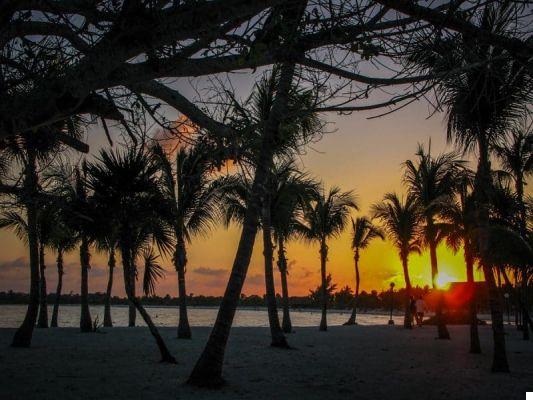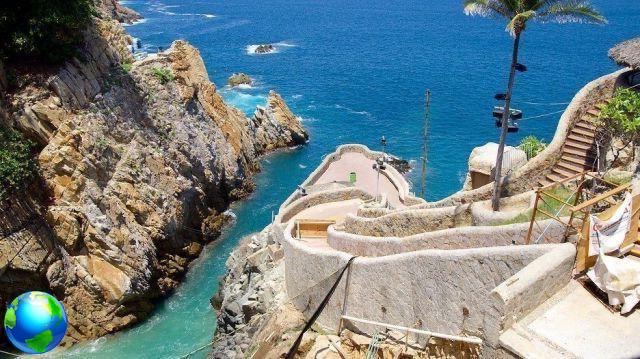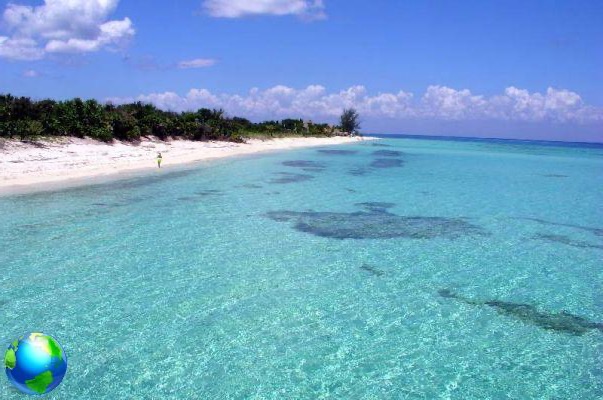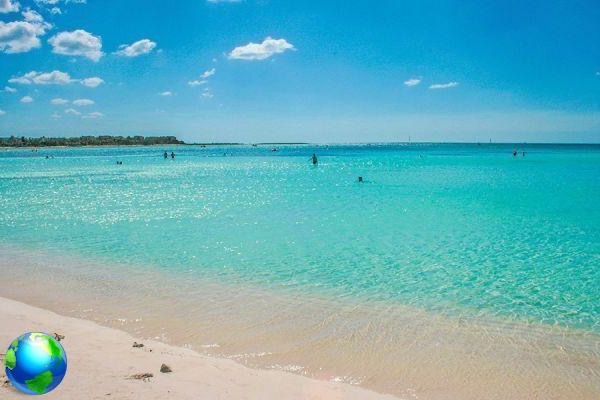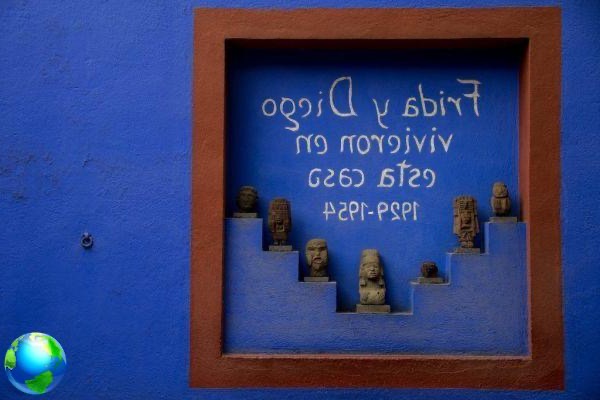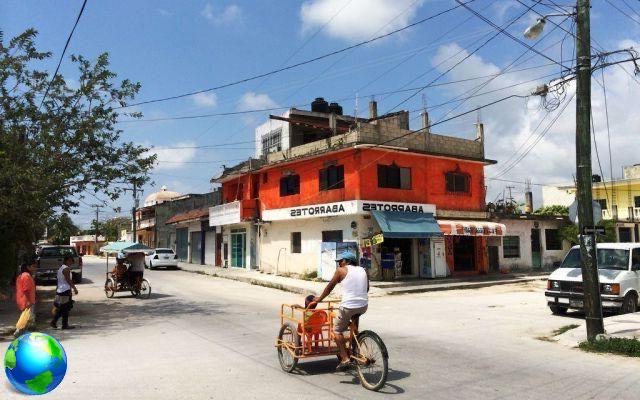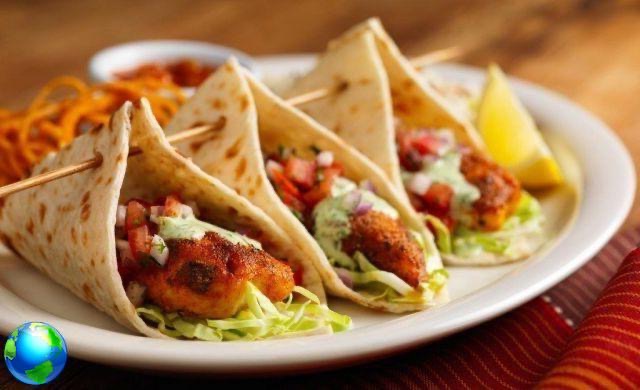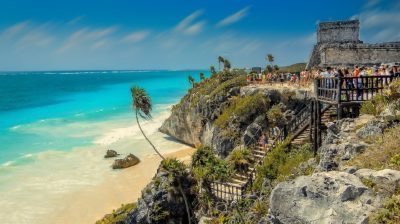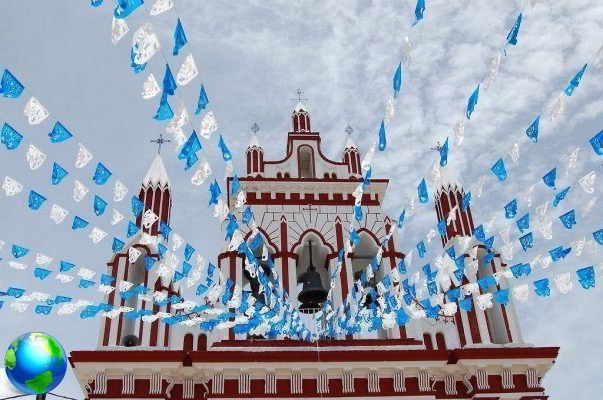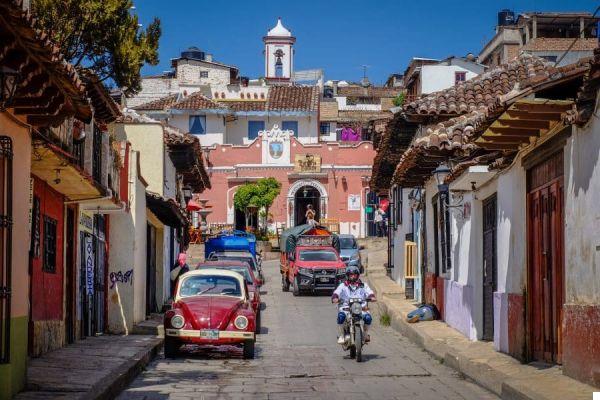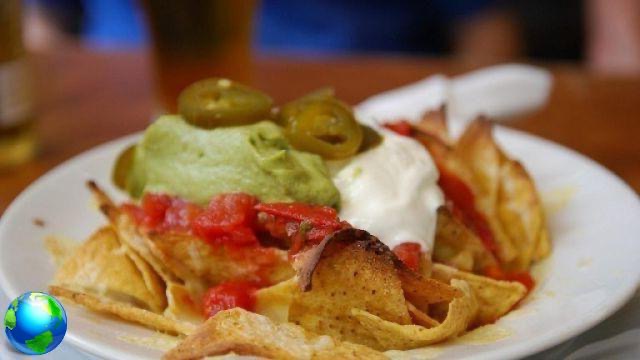"Mexico and Clouds" someone sang .. and the clouds are the first thing that comes to mind every time I think back to Mexico. Mexican skies are not like ours, they seem drawn by a cartoonist, clouds of whipped cream that stand out against a sky that cannot be bluer. And then the sky always changes, at the speed of light, and in an instant you pass from the universal deluge to the third sky. Another thing that strikes everyone as soon as you land in the country are the bright, lively colors that “cover” houses, furnishings and people. Mexico makes you happy! Among the various states of Mexico, the state of Yucatan is one of the most representative because it has everything: archaeological sites, nature, colonial cities and beaches with crystal clear waters overlooking the Caribbean Sea.. A trip to the Yucatan manages to satisfy everyone's tastes and needs, from those looking only for relaxation and nightlife, to those who are passionate about history and nature and are looking for unspoiled corners. Follow me and I will take you to discover this magnificent region (and the neighboring states of Quintana Roo and Campeche) where I have already been several times and which will never tire me.
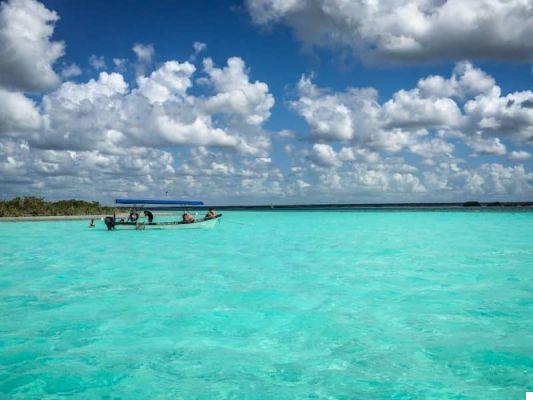
When to go to Mexico (Yucatan, Quintana Roo and Campeche)
The Yucatan Peninsula is located in the tropical zone and that is why there is not much thermal variation throughout the year. Along the coast (Cancun, Playa del Carmen, etc.) the average temperatures fluctuate between 23 ° and 28 ° with peaks that can exceed 30 ° in summer, but night temperatures rarely drop below 20 °. Inside, for example in Merida or Valladolid, the oscillation is a little more pronounced. The best times to go to the Yucatan Peninsula are November / December and January to March, even if the high tourist season is in the summer months, in conjunction with holidays in Europe and the USA. To avoid, if possible, the months of June / July and September / October because it rains a lot and are also the periods with the greatest risk of hurricanes.
Health insurance is required
In Mexico our health coverage is not valid. My advice is to always take a classic medical-luggage insurance that can cover you during the trip. I am very happy with many insurance companies, a site that compares the policies of different companies and proposes the most convenient policy for that particular trip. To do this you will have to enter the data relating to your trip (country, duration, etc.) and they will send you an email with the best proposal that you can then buy directly online.
How to get there and how to get around
Intercontinental flights from Spain / Europe all arrive in Cancun; then from there you can travel by car, bus or plane (there are internal flights to Merida, Campeche, etc.). The bus network, mainly from the ADO company, is quite widespread on the territory but the best thing, in my opinion, remains the car. The roads are in good condition and, by renting a car, you will have much more freedom to reach even less traveled areas. I usually use the Rentalcars website (by booking the rental in advance you spend less and less!).
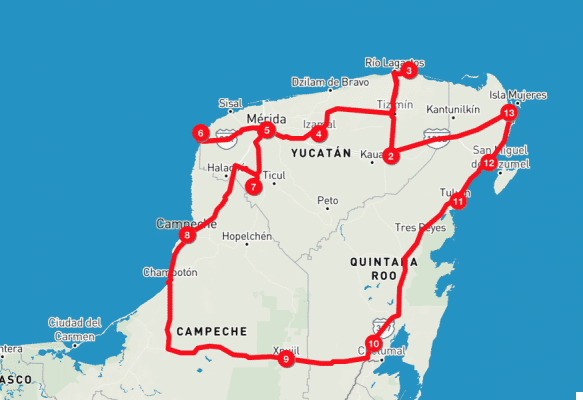
2 week itinerary in the Yucatan
- arrival in Cancun
- Valladolid – Ek Balam
- Chichen Itza - Las Coloradas
- Izamal – Merida
- Celesun
- Uxmal - Campeche
- Calakmul
- Bacalar Lagoon
- Tulum
- Playa del Carmen
- Playa del Carmen
- Playa del Carmen (or Holbox)
- Playa del Carmen (or Holbox)
- return to Spain

Accomodation
- Cancun - Senior Frog Hostel
- Valladolid - Casa Valladolid Boutique Hotel
- Izamal – Hotel T’u’ul
- Merida - Hotel Merida
- Uxmal – Uxmal Resort Maya
- Campeche - Hotel Mision Campeche
- Xpujil – Maya Balam
- Bacalar – Xibalba
- Tulum - A life
- Playa del Carmen – Sunrise 42 Suites Hotel

What to see in the Yucatan Peninsula
Cancun
If it weren't the gateway to the Yucatan Peninsula for those arriving from overseas, Cancun could easily be avoided as far as I'm concerned. Built in the 80s along the lines of Miami, it is a city divided in two: there is Cancun city on the mainland (without any point of interest) and the hotelera area, on a narrow peninsula, where the skyscrapers with mega hotels. The long strip of sand in front of the hotel area is almost entirely private, except for the southernmost part where there are some beautiful white sand public beaches such as Playa Marlin or Playa Delfines.
Valladolid e Ek Balam
Run away from Cancun at once Valladolid, to finally begin to see the real Mexico, the most authentic one. Valladolid is a nice colonial town, with a nice square, a nice atmosphere and some monuments that are worth visiting such as the Church of San Bernardino da Siena (with the adjoining convent). In addition to this, Valladolid also represents the perfect base for visiting the archaeological sites of Ek Balam and Chichén Itza and several cenote located a few kilometers from there. The Ek Balam site (or the "black jaguar") is certainly less famous than other Mayan archaeological sites, but it is worth seeing because the temples that have been restored are very beautiful. The main pyramid is one of the tallest in the Yucatan (30 meters high) and is also one of the few that can still be climbed. After visiting the site (I recommend you take an official guide to fully appreciate it), you can refresh yourself in the cenote Xcanchè which is 2 km from there and can be reached on foot or by bike without even leaving the site. It is an open, nice and uncrowded cenote, has ropes for diving and a zipline. There are changing rooms, bathrooms and a small restaurant. Other beautiful cenote in the area are:
- Cenote Zaci: in the city center, inside a park
- Cenote Ik-Kil : the most popular in the area because it is located just outside the Chichen Itza site - often very crowded.
- Cenote Oxman (inside the Hacienda San Lorenzo): about 10 km from Valladolid, nice and with a small but very interesting cenote. There are lianas to dive in… you have fun playing Tarzan. Those who do not want to go can stay in the hacienda pool where there is also a bar.
- Cenote Suytun: semi closed with a hole at the top, it works best in the middle of the day when the sun at the zenith enters the hole and illuminates the cenote.
- Cenote Dzitnup: similar to Suytun, semi-closed, underground and illuminated, with many rock formations similar to stalactites. It works best in the afternoon.

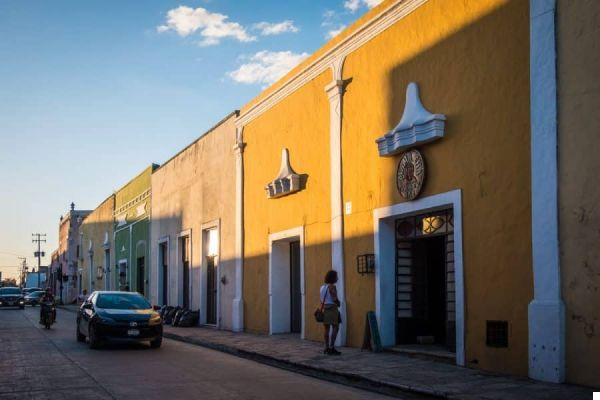
Chichen-itza
Il archaeological site of Chichen-itza it represents the quintessence of the Mayan civilization and does not need many presentations. Everyone has seen at least once the image of his most famous pyramid, the Feathered Serpent pyramid, built like a real Mayan calendar. It must be particularly exciting to come here on one of the two equinoxes (March 21-22 or September 22-23) when, between 12 and 17, the wall surrounding the northern staircase turns into a snake that seems to climb the pyramid. In addition to this there are many other very beautiful finds and, even here, I recommend you dispassionately, to take an official guide (the visit lasts about 1h 30'-2 and costs 1200 pesos) who will explain everything to you. Chichen-itza is absolutely a must!

Rio Lagartos and Las Coloradas
The coastal town of Rio Lagartos is located about 100 km north of Valladolid, on the Yucatan canal, and is famous for its colonies of pink flamingos. To see the flamingo colonies you have to participate in a 2-3h boat trip, but they are mostly seen between April and June. Also in the area, a few kilometers from Rio Lagartos, there are also the pink saline from Las Coloradas, luckily a place still quite unspoiled on the Yucatan peninsula, where few travelers arrive. The water is pink thanks to the presence of particular bacteria and spirulina algae (which flamingos also feed on) and the glance is really very beautiful !! To reach Las Coloradas you have to make an important detour from the road that leads from Valladolid to Izamal, but in my opinion it is absolutely worth it.
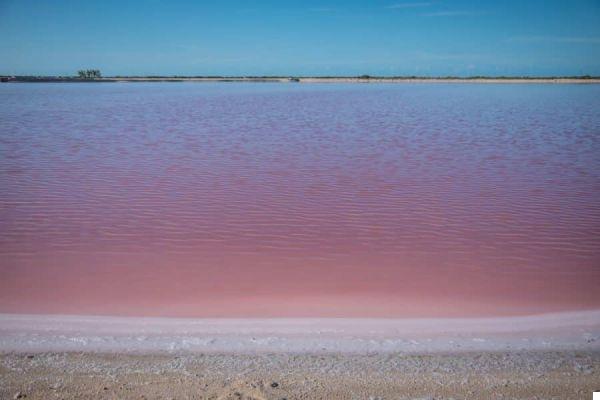
Izamal
Called the “yellow city”, Izamal is a small and cozy colonial town where most of the buildings are painted yellow. You can visit it all in just over 2 hours, but I liked it a lot. Really very nice Convent of San Antonio from Padua in the main square, the pyramid of Kinich Kakmo, but above all the authentic atmosphere that can be seen and breathed while walking through its streets. A little gem!
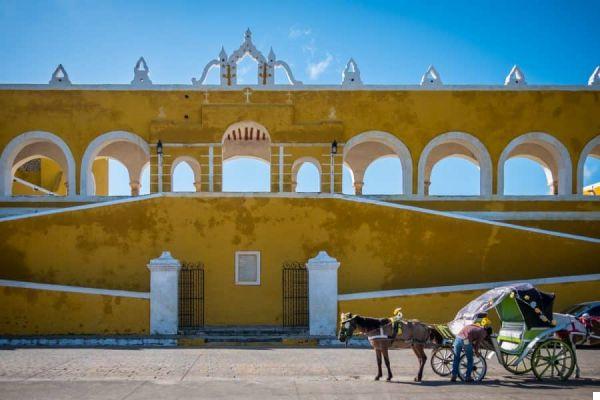
Merida
The capital of Yucatan it is among the most beautiful Mexican colonial cities and it was the first Spanish settlement on the peninsula. Among the things to see / do there are certainly:
- Cathedral of San Ildefonso: more beautiful outside than inside
- Great Maya World Museum. It has more than 1000 Mayan artifacts also from Chichén Itza.
- Regional Museum of Anthropology (closed on Mondays). Home to temporary exhibitions on Yucatan history and culture. The palace is very beautiful and deserves at least one external visit.
- Case of Montejo: the home of the Montejo family, with a magnificent portal
- government palace: inside there are murals by the famous local artist Pacheco. It is also home to the infopoint. Free admission
- Santa Lucia Park: very nice park, in a good area for walking and also for restaurants.
- Municipal market: the main market of the city
- Paseo de Montejo: the street with the most beautiful buildings in the city, an open-air museum
- A mescal drink and four jumps in the two most beautiful clubs in the city: La Negrita (open until 22:00) and Fundacion Mezcaleria (from 22:00 to 04:00)


Celestun
Celestun is a seaside resort located about 100 km from Merida and overlooking the Gulf of Mexico. In addition to the beach and excellent fish restaurants, Celestun is famous for being the starting point for excursions in the Celestun Lagoon National Park, where pink flamingos nest. This excursion (lasts about 2-3h) is truly magnificent and, in addition to the flamingos, you can also visit the mangrove tunnels and the beautiful cenote.

Uxmal
After Chichen-Itza and Tulum, the archaeological site of Uxmal is one of the most visited in the Yucatan. Despite this, there is a much more relaxed atmosphere in Uxmal, the site is large and one feels almost alone in some moments. It will be for this and for the magnificent decorations that are found on its temples and pyramids, that Uxmal is by far my favorite. Here you can still climb the pyramids (and from the top you can enjoy a magnificent view) and there are no stalls or anything else inside the archaeological park: truly a marvel !!


Campeche
The town of Campeche, capital of the state of Campeche in fact, is often mistreated by tourists who visit the Yucatan who rarely choose to stop there. In fact, in my opinion it deserves a lot, but I don't think it's just my opinion, given that its historic center has been recognized as a UNESCO World Heritage Site. In Campeche there are no striking monuments (apart from the beautiful cathedral), but it is rather the whole that is beautiful, especially its cobbled streets with buildings painted in pastel colors. I recommend that you spend at least one afternoon and one evening there (it also has a nice nightlife!).

Bacalar
Crossing the Yucatan Peninsula to return to the state of Quintana Roo, one cannot fail to make a stop in the beautiful Bacalar lagoon, also known as the 7-colored lagoon. We are talking about a very large lagoon that extends for about 50 km parallel to the coast. It is called "of the 7 colors" because its waters take on different shades of blue thanks to the mixture of fresh water and salt water. You can visit it by taking a boat excursion of about 2 hours in which you make several stops for swimming. Simply magnificent !! Also nice is the town of Bacalar, much more relaxed than Tulum or Playa del Carmen.

Tulum
Tulum it is perhaps the place that I have found most changed over the years, and changed for the worse I must say. Until a few years ago it was a quiet town on the coast, with a very hipster / hipster mood while now it is starting to be reached by mass tourism too. Unfortunately from the mass tourism of the Americans who, as we know, do not bring anything good. Close to the famous archeological area of Tulum they have built a kind of large open-air shopping mall where it is hard to even walk, and the same happens inside the site as well. The latter remains beautiful and worth seeing, for heaven's sake, but seeing it in the crowd certainly takes away a lot of charm (not to mention the queue that you have to do to enter). On the other hand, the town has a really nice vibe and around Tulum there are several cenote that absolutely deserve to be seen. Find all the detailed information on Tulum in the article Tulum (Mexico): what to see, where to eat and where to sleep. As for the cenote, the ones in the surrounding area that deserve are:
- Cenote Casa Tortuga
- Cenote Dos Ojos
- Gran Cenote
- Crystal Cenote
- Cenote Zacil Ha


Playa del Carmen and surroundings
Playa del Carmen is the Rimini of the Yucatan, the most touristic city of the Riviera Maya, full of hotels, restaurants and clubs. Personally I don't like it very much, but I recognize that it can be a perfect base for visiting many other beautiful places in the surrounding area such as Akumal or Xcacel beaches (to go to see turtles), l'ialone of Cozumel, Isla Mujeres, oi famosi parks of Xcaret or Rio Secreto. Among the clubs / venues, the famous Coco Bongo I would say that it is not to be missed (the place that became famous for the film The Mask). For 3 hours there is a real show (Cirque du Soleil style), drinking non-stop (the entrance ticket is open bar) and dancing between shows.
